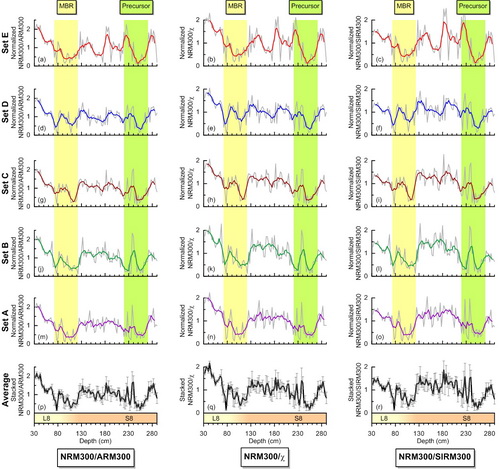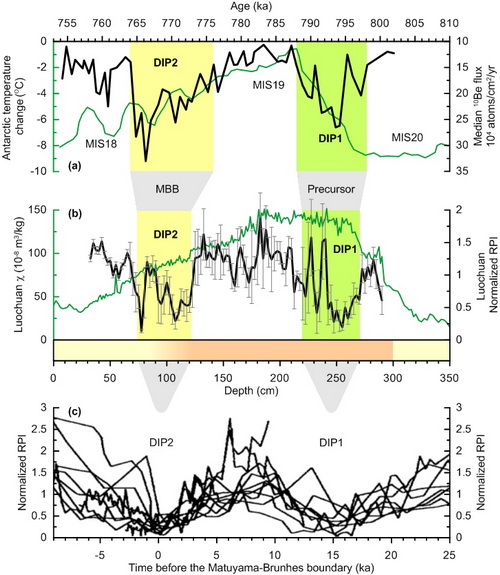A precursor to the Matuyama-Brunhes reversal in Chinese loess and its paleomagnetic and stratigraphic significanceUpdate time:09 19, 2012
Vice Professor JIN Chunsheng and Professor LIU Qingsong report high-resolution palaeomagnetic results across the lower part of S8 in the Luochuan area, northwest of China using parallel subsets samples. A palaeomagnetic anomaly with low palaeointensity and disordered magnetic direction was identified ∼21 ka prior to the Matuyama–Brunhes (MB) polarity reversal, and is consistent with the MB precursor observed from marine sediments and lava flows. This is the first convincing report of the MB precursor in terrestrial material (Chinese loess), which attests the global feature of the MB precursor. Constrained by the stratigraphic position of both the MB polarity reversal and the MB precursor, the loess unit L8 and palaeosol unit S8 of the Chinese loess sequence are undoubtedly tied to the marine isotope stages 18 and 19, respectively. This correlation is critical for an accurate understanding of the correspondences of palaeomagnetic records between the Chinese loess and marine sediments.
Figure 1. RPI curves constructed from five sets of parallel samples. (Image by JIN)
Figure 2. Schematic correlations of stratigraphy and RPI between the Chinese loess, marine sediments and an Antarctic ice core. (Image by JIN) Jin et al. A precursor to the Matuyama-Brunhes reversal in Chinese loess and its paleomagnetic and stratigraphic significance. Geophysical Journal International. 2012, 190: 829–842 (Download Here)
|
Contact
Related Articles
Reference
|
-
SIMSSecondary Ion Mass Spectrometer Laboratory
-
MC-ICPMSMultiple-collector ICPMS Laboratory
-
EM & TEMElectron Microprobe and Transmission Electron Microscope Laboratory
-
SISolid Isotope Laboratory
-
StIStable Isotope Laboratory
-
RMPARock-Mineral Preparation and Analysis
-
AAH40Ar/39Ar & (U-Th)/He Laboratory
-
EMLElectron Microscopy Laboratory
-
USCLUranium Series Chronology Laboratory
-
SASeismic Array Laboratory
-
SEELaboratory of Space Environment Exploration Laboratory
-
PGPaleomagnetism and Geochronology Laboratory
-
BioMNSFrance-China Bio-mineralization and Nano-structure Laboratory

 Print
Print Close
Close

